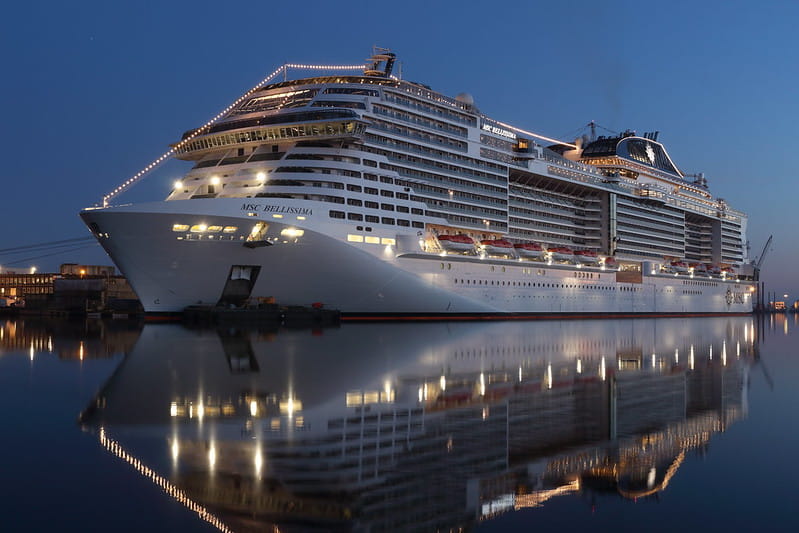

MSC Cruises Adopts New Technology to Save Fuel and Reduce Fleetwide Emissions
MSC Cruises, part of the passenger division of the MSC Group and the third-largest cruise line in the world, recently adopted a new itinerary planning optimization tool called OptiCruise. This tool has been designed to improve operational efficiency, one of three cornerstones of the company’s net zero strategy.
OptiCruise uses a new mathematical model that examines multiple planning variables to help shape MSC Cruises’ sailing itineraries. Using the tool, MSC Cruises has developed voyages that balance efficient operations and guest satisfaction. MSC Cruises projects a fuel saving by up to 15% in 2027, thanks to the application of this new tool, which will lead to a significant reduction in emissions.
This initiative is part of MSC Cruises' ongoing commitment to develop sustainable practices that have a lasting, positive impact on its employees, guests, and the planet. The cruise line is taking measurable steps to achieve net zero greenhouse gas (GHG) emissions by the year 2050, including its other two cornerstones — renewable fuels, and improved ship design and technology.
OptiCruise: Introducing New Technologies for Optimal Efficiency
OptiCruise was developed with OPTIMeasy, an organization focused on providing operational research to find optimal solutions for the transport and logistics sector.
Holiday destinations have always been a major influence for travellers in the cruise industry. But the mathematical model within OptiCruise can integrate other critical details in the cruise planning process to create an energy-efficient itinerary. This includes operational costs like food, port charges and fuel, as well as ship speed, shore excursions, departure and arrival times, the arrangement of port calls and travel destinations that appeal to customers.
By using OptiCruise, MSC Cruises is able to build optimized itineraries that meet the needs of its guests and enhance the sustainability of its operations.
Speaking about the new tool, Michelle Francioni, the Chief Energy Transition Officer of MSC Cruises, stated:
We have identified and developed this new technology to optimize the decision-making process of itinerary planning with the aim to make fuel savings across our fleet from 2027. The OPTIMeasy team calculates that the average fuel savings made by using OptiCruise are in the range of 10-15 percent which is a significant step forward in our ambition to achieve our net zero greenhouse gas emissions target by 2050 for our marine operations.

OptiCruise Developed Through Project CHEK Impacting Industry-wide Changes
Opticruise was developed through an initiative called Project CHEK, an endeavour funded by the European Union (EU) to investigate and test low-carbon opportunities in the maritime industry. This tool can make a positive impact on the cruise sector as a whole, reducing industry-wide emissions.
MSC Cruises Continues to Strive Towards Sustainability Goals
With a fleet of 23 ships and two new vessels to be introduced in 2026 and 2027, MSC Cruises’ investment in new technology will positively impact the business. This new itinerary planning tool will help the brand continue its premier guest experience while achieving maximum efficiency during sailing – from 2027 onward.
The company’s dedication to operating responsibly goes beyond its mission to achieve net zero GHG emissions by 2050. The cruise line is also making concerted efforts to improve employee and guest welfare, protect the environment, encourage conscientious tourism, and follow responsible supply and value chain practices.
In so doing, MSC Cruises is committed to taking meaningful, measurable actions that have a long-term positive impact on guests, employees and the planet.
Learn more about MSC Cruises and its sustainability initiatives today.